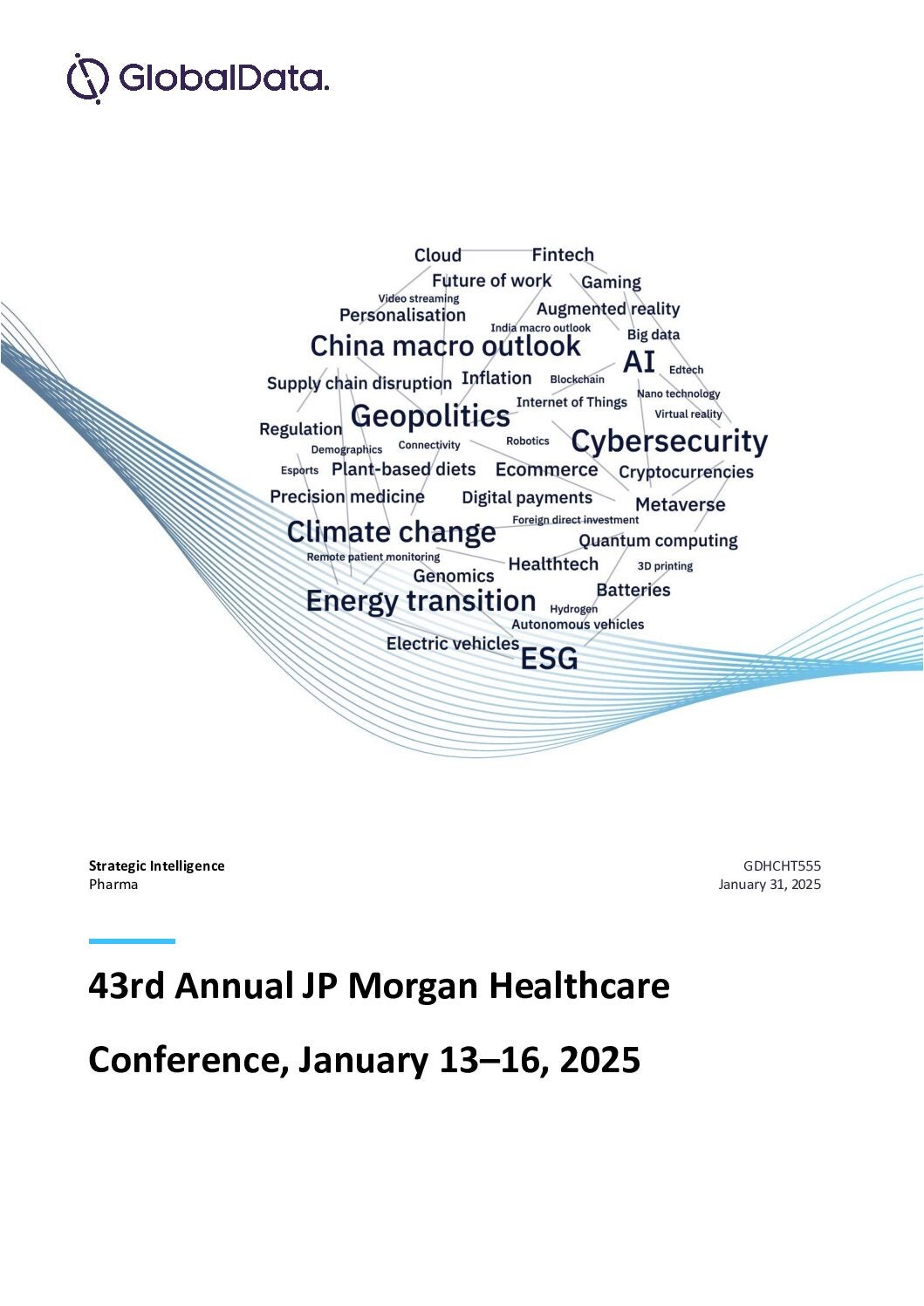
The 43rd Annual JP Morgan Healthcare Conference took place in San Francisco, California on January 13–16, 2025.
This annual conference is one of the largest and most informative healthcare investment events in the industry. This year’s invitation-only conference provided key insights into the evolving strategies, pipeline advancements, and market trends shaping the biopharmaceutical industry, including acquisitions, innovative pipeline developments, and strategic shifts to navigate a rapidly changing healthcare landscape.
Amidst company presentations detailing revenue performance, pipelines, and forecasts for 2025 and beyond, several key themes and market dynamics emerged from the conference.
Among pharma companies, acquisitions, pipeline reorganizations and an emphasis on artificial intelligence (AI) took center stage, while contract development and manufacturing organisations outlined their response to geopolitical concerns and the impact on manufacturing strategies. Health tech trends in genomics, robotics, and other disruptive technologies also provided a glimpse into the future.
As per GlobalData, while there remains a general sense of optimism about the funding environment, deal-making has yet to return to 2021 levels. Multi-billion-dollar merger and acquisition announcements from Johnson & Johnson, Eli Lilly, and GSK may signal renewed biopharmaceutical deal-making confidence following subdued activity in 2024, with industry experts predicting larger deals in 2025 driven by regulatory changes and pipeline refueling needs.
Forecast for pharma
At the conference, big pharma players emphasised collaborations with biotechnology companies for pipeline development, using AI, CRISPR/Cas9 gene editing tools, and other new technologies.
Patent expiries influenced operational strategies as Johnson and Johnson sought to protect Stelara from biosimilar competition, similar to Abbvie’s approach with Humira. During a presentation, Teva also described how the company is expanding its biosimilars and innovative drug pipeline in areas like immunology and respiratory, emphasising its strategy to drive growth by diversifying into high-value therapies.
Drug pricing and access continue to inform the healthcare landscape and several tech companies are partnering with pharma to address affordability.
CDMOs react to changing environment
The outlooks of CDMO CEOs at the conference outlooks were mixed. An industry-wide funding slowdown caused a generally poor year for CDMOs as they struggled with lower spending from large pharma and ongoing biotech asset rationalization. For example, this funding environment caused Charles River sales to decline, prompting restructuring and staff cuts. But hope is on the horizon with the slow biotech bounce back.
Another key factor in this space is the BIOSECURE Act. If passed, it would limit US funding for biotechs working with Chinese companies, causing global shifts in pharmaceutical supply chains. Nevertheless, China’s biotech sector will still be a key player in global growth. Despite geopolitical challenges, manufacturer WuXi Biologics is expanding globally, aiming for 50% of its revenue to come from outside China by 2030. Additionally, at the meeting, a WuXi Biologics representative stated the company’s Irish vaccine facility sale was not influenced by the US bill, and it is signing more foreign contracts than ever before.
Medical devices sector
AI-related partnerships on the rise, particularly in the health technology space. In January, NVIDIA struck alliances with Illumina, IQVIA and Mayo Clinic to leverage AI, especially in drug development and genomics. Medtech M&A activity could also pick up this year, after Stryker inked a $4.9 billion deal to buy Inari Medical, providing entry into the high growth peripheral vascular segment.
The diabetes device player Dexcom forecasts healthy revenue, while robotics maker Intuitive Surgical was more gloomy in the face of weight loss drug competition. Zimmer Biomet also lost market share in 2024 but predicted better uptake of its hip and knee portfolio in 2025.



